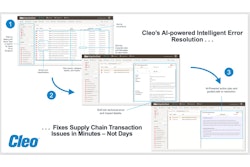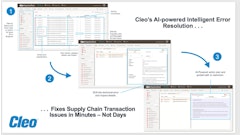
Breakthrough’s AI Adoption in Transportation Pulse Poll reveals that nearly half of transportation leaders say AI has had a significant impact on their ability to navigate seasonal transportation challenges in Q4 2025. This signals AI is not only operational, but well on its way to becoming indispensable.
But perhaps the most compelling takeaway is that it’s still early.
“AI’s current impact is just the starting line. Executives recognize this, and they’re making funding for AI a long-term priority. Why? Because early wins like lower costs, faster decisions, and greater agility point to a much larger payoff on the horizon,” according to Breakthrough.
Key takeaways:
● 96% of transportation leaders currently use AI to enhance transportation and logistics planning, operations, and decision-making.
● 49% say AI had a significant impact on helping them manage Q4 shipping challenges.
● 48% used AI to navigate rising transportation and fuel costs in Q4.
● 77% are already seeing measurable ROI from AI-powered transportation solutions or expect to within the next 6 months.
● 96% agree that executives at their organization view AI as a core investment pillar for transportation and logistics (of these, 59% strongly agree).
● Half of U.S. transportation leaders say AI saved their Q4.
● Three in four transportation leaders expect AI ROI within six months.
● Myth: AI is still years away from delivering real ROI for logistics teams.
● Executive consensus: AI is strategic transportation infrastructure, not just software.
● Untapped opportunity: AI-powered rate negotiation and sustainability optimization.
● 96% of transportation teams currently use AI to enhance planning, operations, and decision-making across the supply chain. Many are using AI for multiple use cases, with the Top 3 being analytics and reporting; route and load optimization; and freight demand and capacity forecasting.
● However, AI remains underutilized for long-term strategic planning. Just one-third (34%) of transportation leaders say their teams use AI to support contract and rate negotiations or the RFP process, an area of opportunity to use technology to enhance both margin and sustainability impact.
● Nearly half of transportation leaders (49%) using AI say it’s already had a significant impact on managing challenges related to the Q4 shipping surge this year.
● This suggests many transportation teams have quickly progressed from the adoption phase to activation in core strategic areas, with results emerging rapidly enough to influence operations in real time, even within tight windows like Q4’s peak shipping season.
● Transportation teams are most commonly turning to AI to solve challenges related to real-time demand and cost fluctuations.
● The top hurdles teams are using AI to address during this season’s shipping surge are rising transportation and fuel costs; fluctuating freight demand; and margin pressure or cost-reduction goals.
● However, AI appears to have less impact on solving complex, high-level challenges driven by macroeconomic, geopolitical and industry-specific forces such as tariffs, weather disruptions, sluggish economic growth, and mergers and acquisitions.
● Most transportation leaders say their investments in AI-powered transportation solutions are already paying off. 43% say they’re already seeing measurable ROI and 34% expect to within the next six months. Just 4% believe it will take a year or more before AI investments pay off, and only 2% believe it’s too soon to tell.
● The majority of transportation leaders (96%) say continued AI investment is a top priority for their executive officers. Of these, 59% strongly agree that executives at their organization view AI as a core investment pillar for transportation and logistics and are willing to commit long-term budget to support it.





















